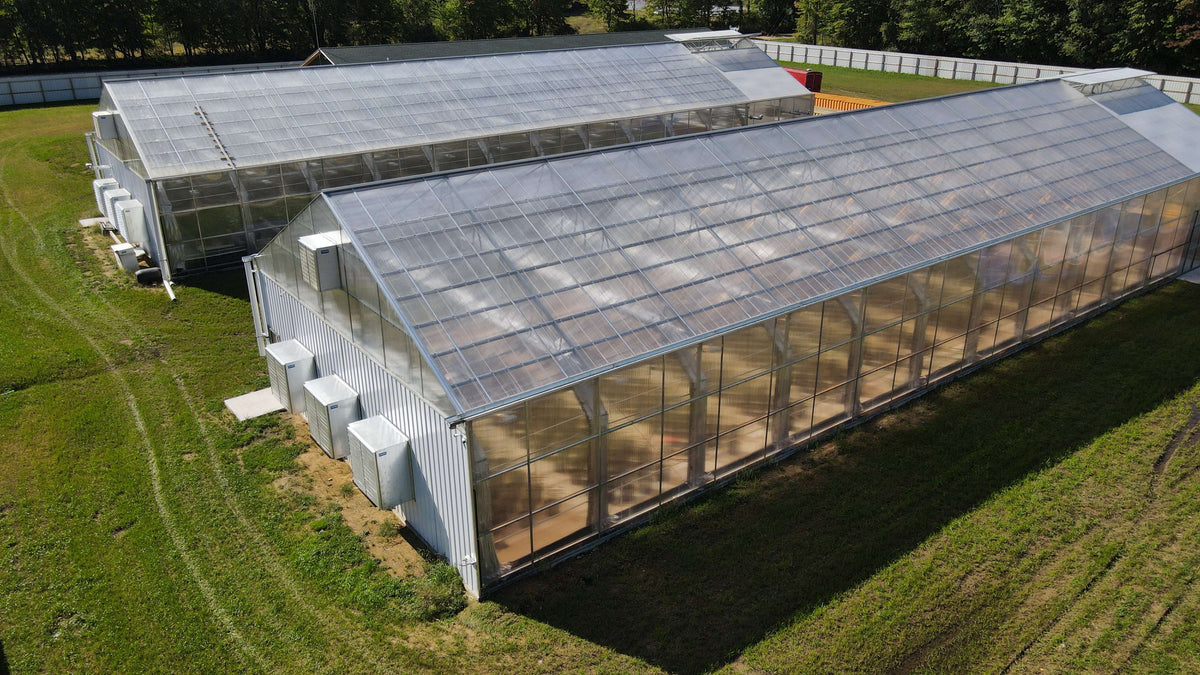The Future of Greenhouses: Technologies in Sustainable Agriculture
Are you curious concerning the future of greenhouses and exactly how they are revolutionizing sustainable farming? Look no more! In this short article, we will certainly explore the interesting innovations that are leading the way for a greener and much more effective farming market. From advanced environment control systems to upright farming methods, water-efficient irrigation approaches, renewable resource assimilation, and smart information analytics, these improvements are transforming the method we expand our food. Prepare yourself to discover the future of lasting farming in greenhouses!
Advanced Climate Control Systems
To accomplish ideal expanding conditions, you can count on the innovations in greenhouses with innovative environment control systems. These systems have reinvented the means we grow plants, supplying a controlled environment that contributes to plant growth. With these ingenious systems, you can currently adjust temperature, humidity, light degrees, and even CO2 focus to create the best conditions for your plants to thrive.
One of the crucial attributes of these innovative environment control systems is their capability to control temperature. By making use of sensing units and automated controls, the greenhouse can change the temperature level based upon the certain needs of the plants. This makes certain that they are never ever revealed to extreme warmth or chilly, which can be harmful to their growth.
Moisture control is one more essential aspect of these systems. By maintaining the perfect humidity levels, you can protect against problems such as mold, mildew, and disease from affecting your plants. These systems can likewise control the amount of light that reaches the plants, making sure that they get the optimal quantity for photosynthesis.
Furthermore, advanced climate control systems can also adjust carbon dioxide concentrations. By increasing the levels of carbon dioxide in the greenhouse, you can improve plant growth and productivity. This is specifically beneficial in areas with low natural carbon dioxide degrees.
Upright Farming Techniques
One important upright farming technique is making use of stacked expanding systems. Stacked growing systems are typically used in urban areas where area is limited.
One popular method is recognized as vertical hydroponics, where plants are expanded in nutrient-rich water without dirt. This strategy is very efficient as it decreases water use by approximately 90% compared to standard farming techniques. Furthermore, since the plants are expanded indoors, they are protected from insects and conditions, lowering the requirement for pesticides.
Another method is aeroponics, which includes suspending the plant origins in a mist or air environment. This technique enables ideal nutrient absorption and oxygenation, causing faster growth and higher returns. Aeroponics additionally uses much less water than typical farming and can be executed in upright systems, making it a preferred option for vertical farming.
Water-efficient Watering Methods
Optimizing water preservation is crucial when it involves executing water-efficient watering approaches in lasting farming. With global water shortage ending up being a pressing issue, it is vital to develop innovative techniques that optimize water use in greenhouse procedures.
One appealing approach is drip watering, which supplies water directly to the plant roots, reducing waste and evaporation. By making use of a network of tubes with tiny emitters, water is used gradually and precisely, making certain that plants receive the necessary wetness without excess overflow.
Another efficient technique is using dirt dampness sensing units. These devices gauge the moisture web content in the soil and give real-time information to farmers. By keeping an eye on the dirt's moisture degrees, farmers can precisely identify when and how much water to apply, avoiding over-irrigation.
Moreover, the implementation of rainwater harvesting systems is getting popularity in greenhouse agriculture. Gathering rain from roofs and storing it in storage tanks enables farmers to use this all-natural resource for irrigation functions, lowering dependence on traditional water sources.
Finally, the fostering of automated watering systems can considerably enhance water performance. These systems make use of sensors to find dirt dampness degrees and Check This Out weather, adjusting irrigation routines appropriately. By enhancing water use based upon actual plant requirements, these systems can minimize water waste and advertise lasting farming methods.
Renewable Power Combination
Renewable energy assimilation in greenhouses offers a number of advantages, consisting of reduced operating expenses and lowered reliance on non-renewable energy sources. The produced power can after that be made use of to run various operations within the greenhouse, such as air flow, illumination, and home heating systems. These generators harness wind power and transform it right into electricity, which can be utilized to supplement the power requirements of the greenhouse.
Smart Information Analytics and Automation
To boost the effectiveness of your greenhouse operations and maximize resource application, consider implementing clever data analytics and automation. Smart information analytics includes collecting and examining data from numerous sensors and tools within your greenhouse.
This can include automating the control of lights, ventilation, irrigation systems, and nutrient shipment. By automating these procedures, you can make sure that your plants obtain the ideal conditions and nutrients at the right time, without the need for constant hands-on intervention.
Furthermore, wise data analytics and automation can collaborate synergistically. The data gathered by sensors can be utilized to notify computerized visit this website systems, permitting them to make real-time modifications based upon the current conditions. This assimilation of data analytics and automation can result in a lot more efficient and accurate resource allotment, eventually leading to greater returns and much better plant top quality.
Verdict
In final thought, the future of greenhouses in sustainable farming looks appealing. With advanced environment control systems, vertical farming techniques, water-efficient watering techniques, and renewable power integration, greenhouses are coming to be a important link lot more efficient and eco friendly.
:max_bytes(150000):strip_icc()/GettyImages-1221376177-a86b340094864992a4ecbcb459093d7b.jpg)
By enhancing water use based on real plant needs, these systems can decrease water waste and promote lasting farming techniques.
